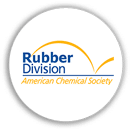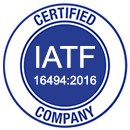Coi Rubber has the unique ability to utilize transfer molding process as well to manufacture a wede range of precision rubber components. The benefits of transfer molding is broad in scope and efficiently. Transfer molds consume additional rubber when filling the cavity in the “pot” and “sprues”. However, because the cavity plates start out closed, less rubber escapes the cavity, thereby limiting excess flash. This also makes it well suited for molding delicately shaped parts or securing inserts that are embedded in a product. Since you work with a single “slug” of uncured rubber and not several individual precut or shaped “slugs” of rubber for each cavity, the transfer mold is ideal for colored and translucent compounds. Transfer molds have a shorter cycle and cure time than compression molds. This is due to a rapid transfer of heat to the rubber, while being forced from the “pot”, through the “sprue” and into the cavity. It is also faster to load just one “slug” of rubber when running a multi-cavity mold. Due to the more complex design of the transfer mold, it is more expensive to purchase than a compression mold, but it may be better suited for your product design.
Transfer Molding Rubber
- Well-suited to bonding rubber to small, delicate metal parts or producing small parts from large multi-cavity molds.
Advantages of Transfer Molding Rubber:
- Tooling can be less complex and lower cost to construct than injection
- Lower percentage material runner scrape vs. traditional injection
- Process is suitable from most elastomers and cure systems
- Cycle times may be shorter reducing time while increasing efficiency
Disadvantages of Transfer Molding vs. other rubber molding methods
- Labor for preforming material can add cost (however offshore manufacturing curtails this problem)
- Cycle times may be longer (additional shifts counter this problem)
- Tooling can be more complex and higher cost to construct than compression
- Higher percentage material runner scrape vs. compression molding








